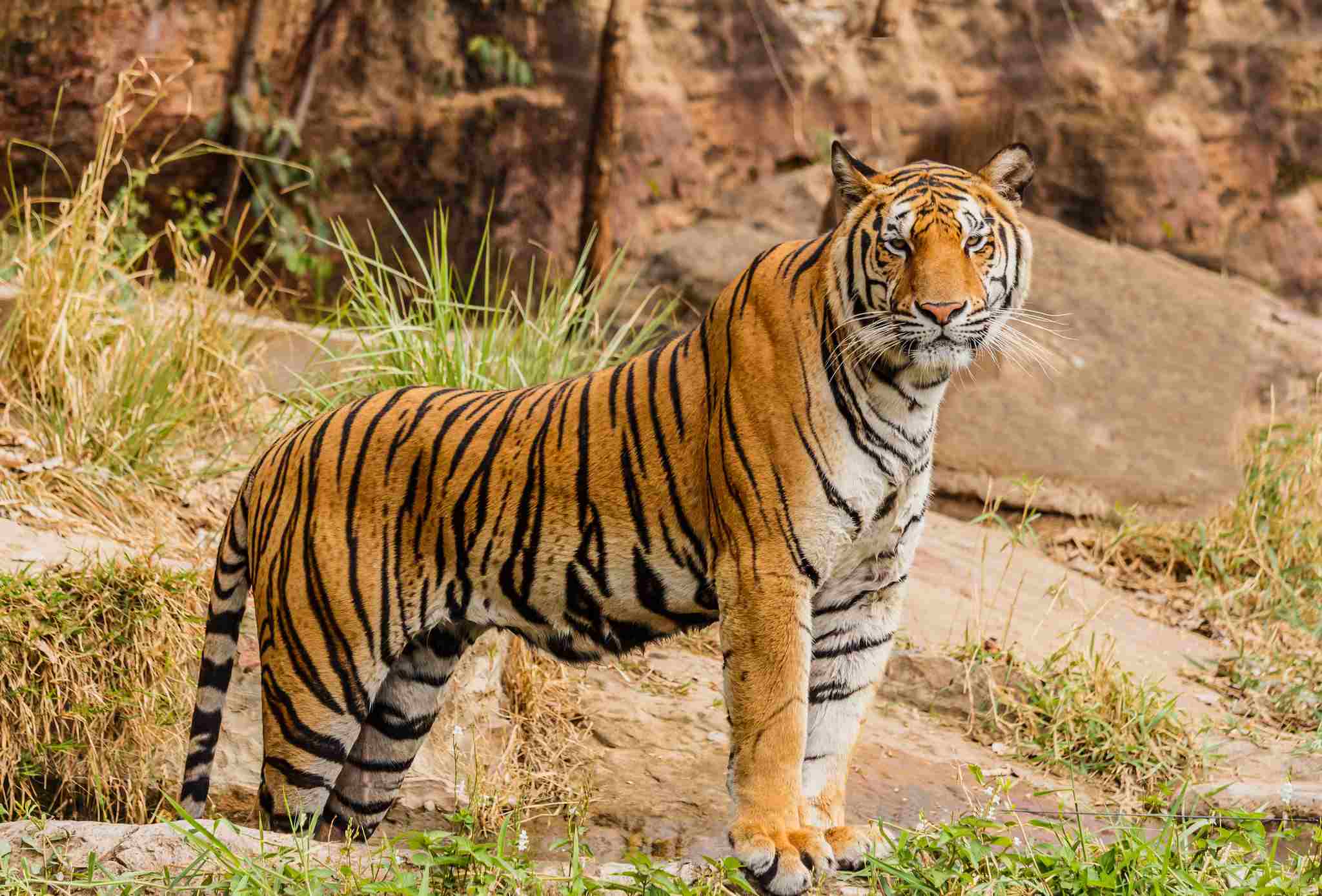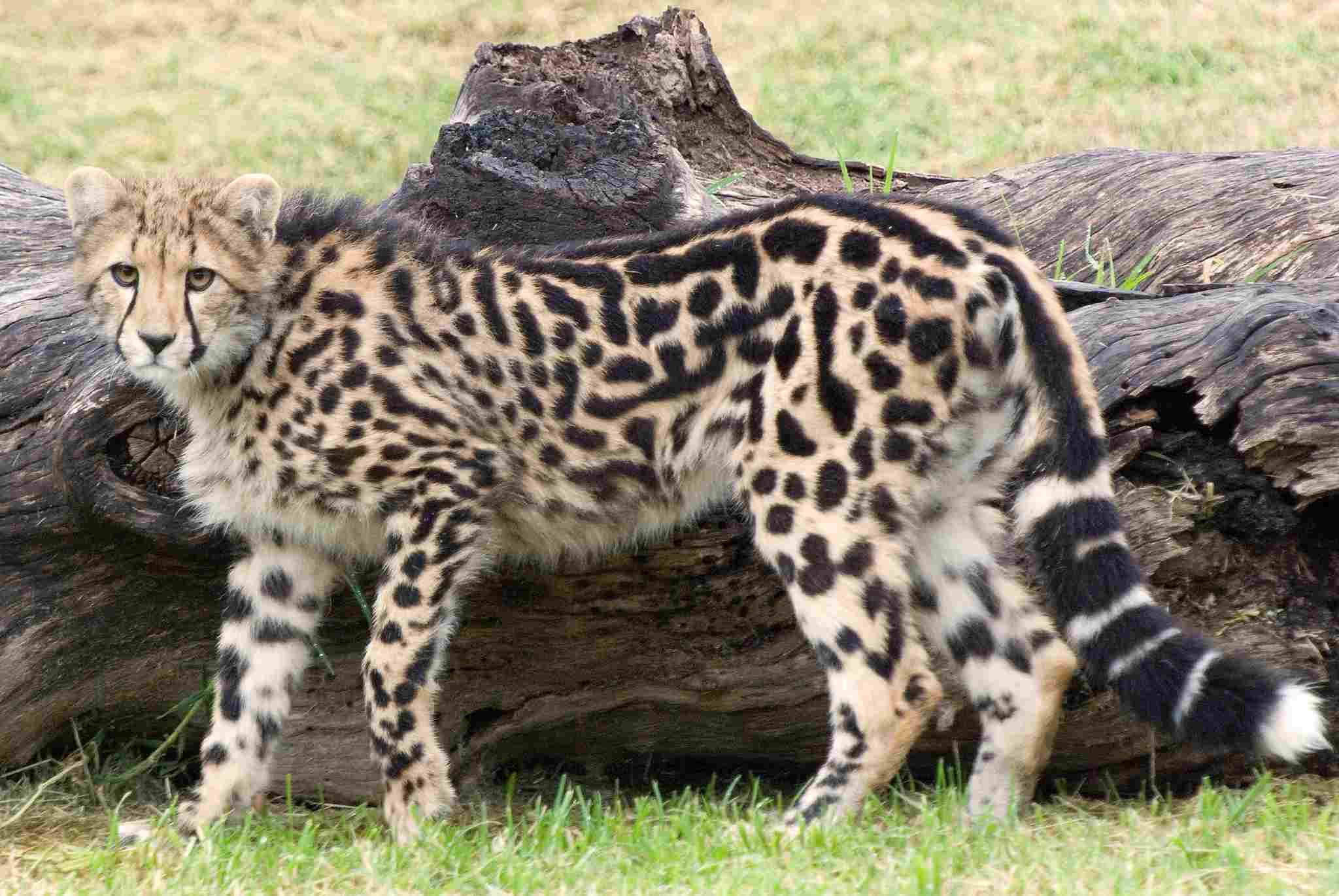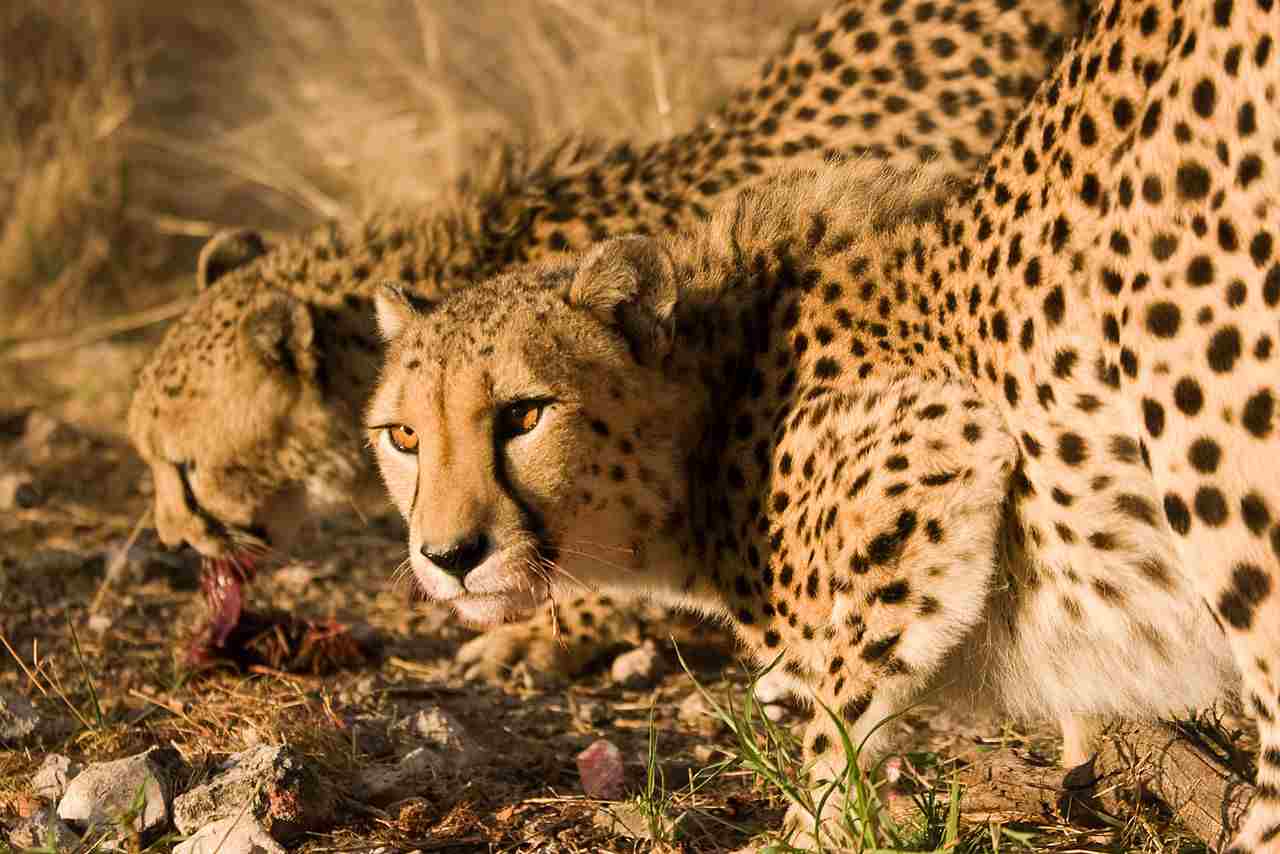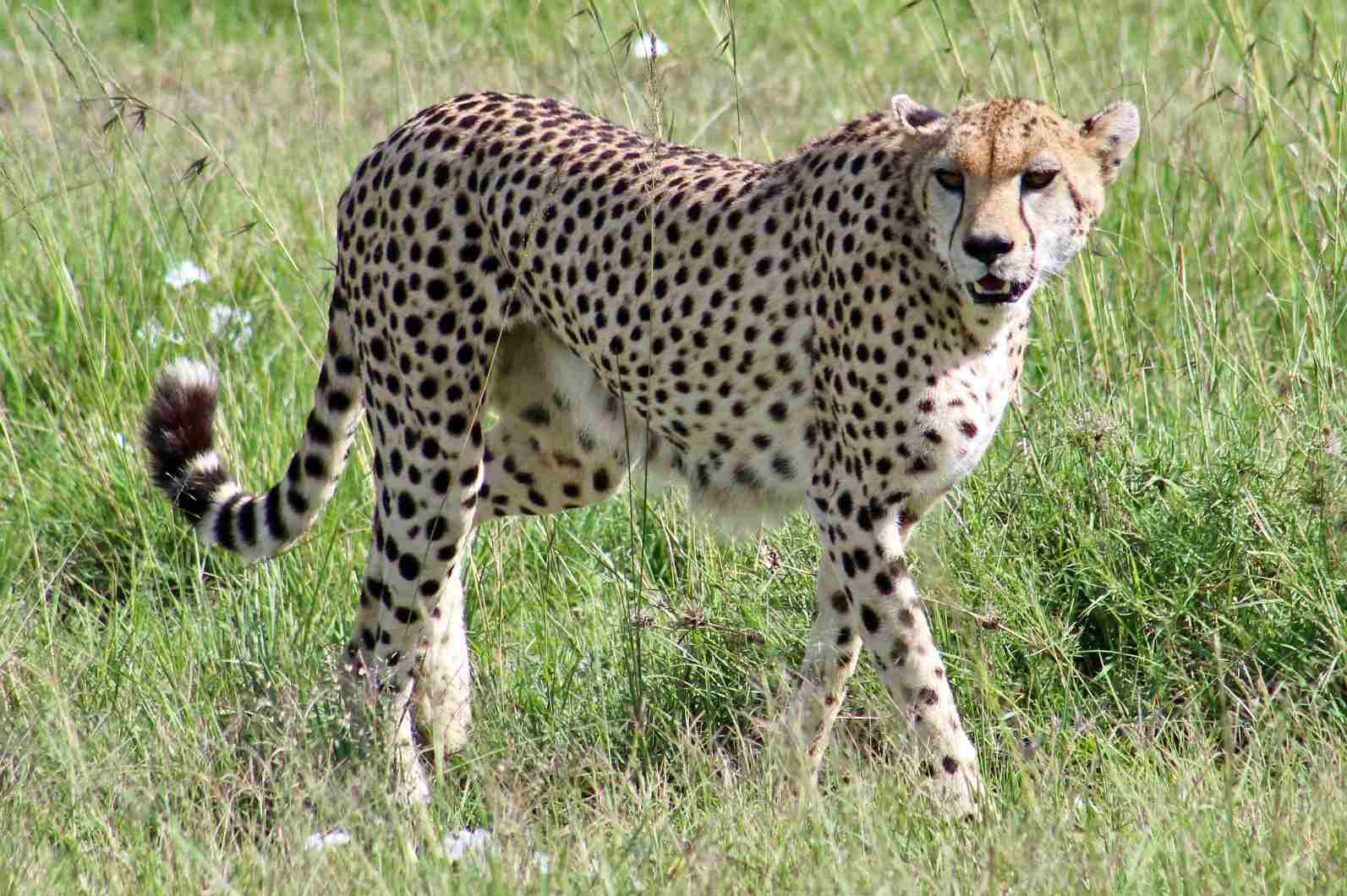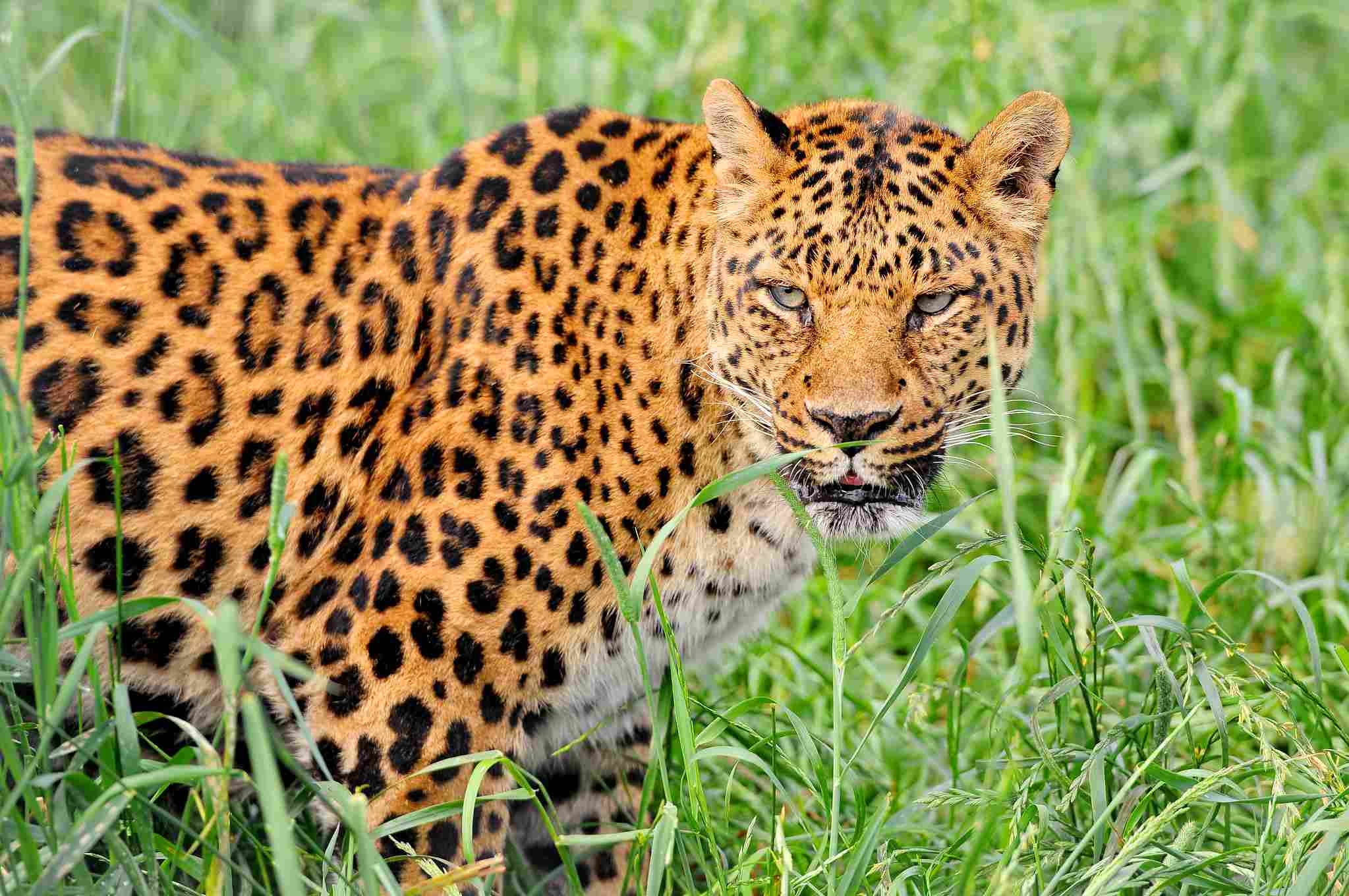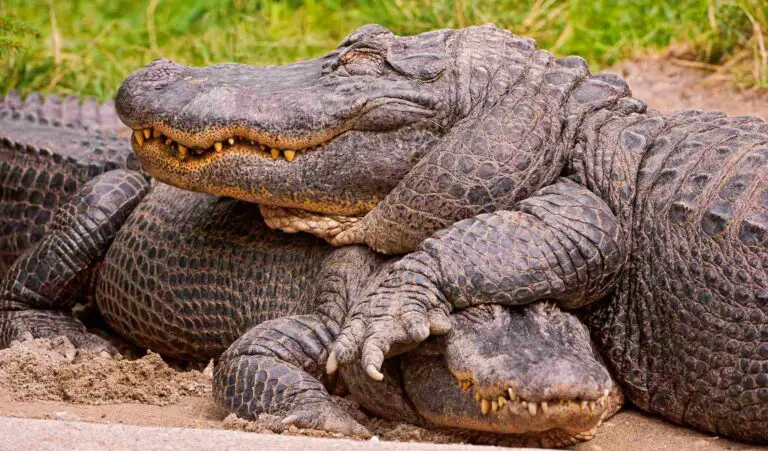Cheetah Vs Tiger Size, Weight, Ecological Comparison
A tiger will have the advantage in a fight against a cheetah due to its larger size and greater strength. Tigers are known for being larger, heavier, and stronger than cheetahs. Additionally, tigers are more aggressive, which gives them an edge in physical confrontations. In this article, we will compare the two species based on factors such as size, weight, strength, and aggression.
Reasons Why a Tiger Will Win a Cheetah In a Fight/Physical Confrontation
I). Larger Size
One of the main reasons why a tiger would win in a fight against a cheetah is its larger size. Tigers are significantly bigger than cheetahs, with adult males weighing between 400 and 700 pounds, while cheetahs typically weigh between 80 and 140 pounds.
This size difference gives tigers a clear advantage in terms of physical strength and power. With their larger size, tigers have more muscle mass and a stronger build, allowing them to overpower their opponents more easily.
II). Weight and Strength Advantages
In addition to their larger size, tigers also have a significant weight and strength advantage over cheetahs. Tigers have a more robust and muscular body structure, which enables them to deliver powerful blows and take down larger prey.
Their sheer strength allows them to overpower and dominate their opponents in a physical confrontation. On the other hand, cheetahs, although agile and fast, lack the same level of strength and power as tigers.
III). Tigers are More Aggressive Than Cheetahs
Another reason why a tiger would likely win in a fight against a cheetah is their difference in aggression levels. Tigers are known for their aggressive nature, especially when it comes to defending their territory or fighting for resources.
They have a fierce and fearless demeanor, making them more likely to engage in physical confrontations and fight until the end. In contrast, cheetahs are generally more docile and less confrontational, preferring to avoid conflicts whenever possible.
Therefore, the larger size, weight and strength advantages, and higher aggression levels of tigers make them more likely to win in a fight against cheetahs.
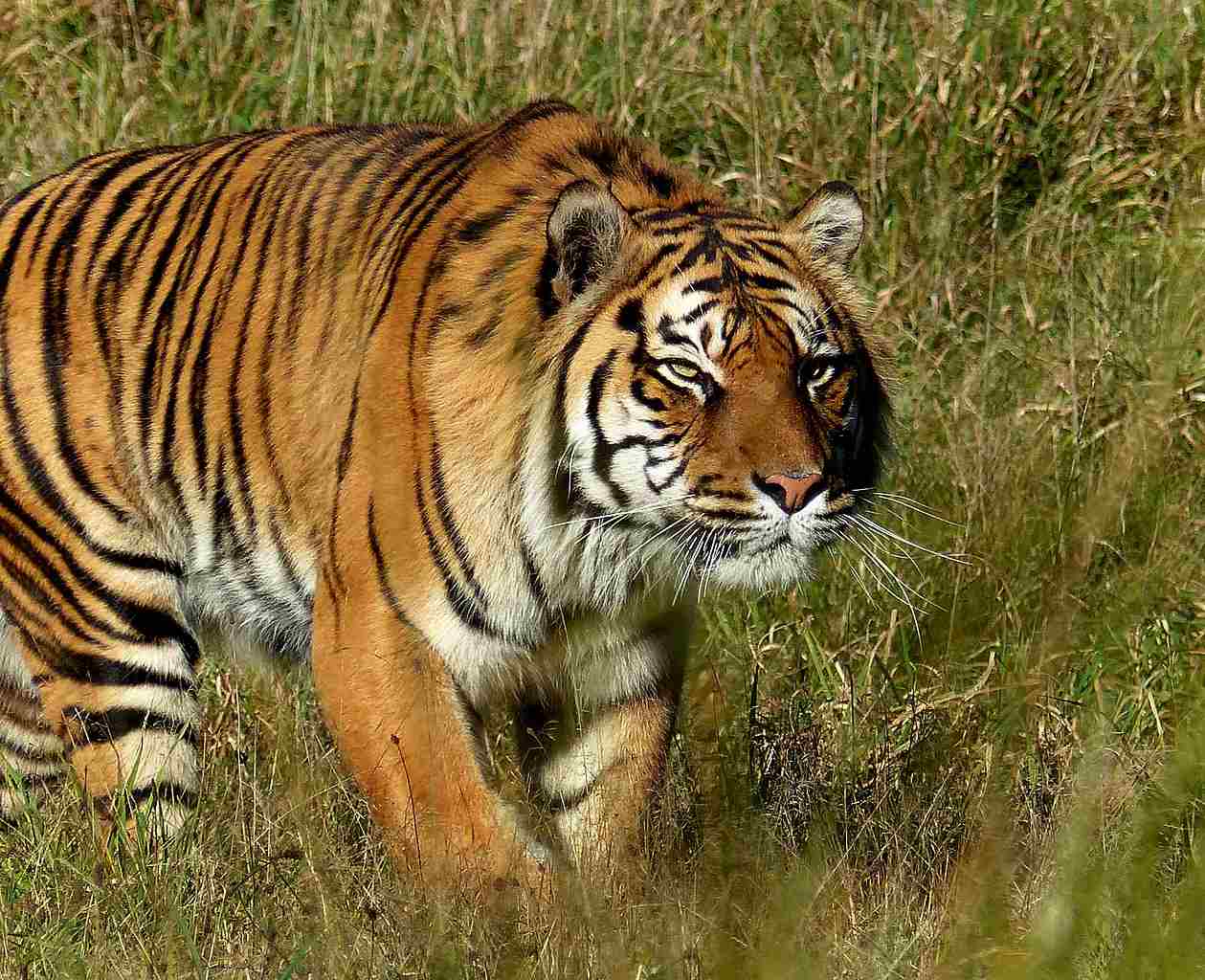
*Details of Comparison
| Feature | Cheetah | Tiger |
| Size | ||
| – Total Body Length | 3.5 – 4.5 ft | Up to 11 ft |
| – Height at Shoulders | 2.5 – 3 ft | 3 – 3.5 ft |
| Weight | ||
| – Adult Males | 77 – 143 lbs | 400 – 700 lbs |
| – Adult Females | Slightly smaller and lighter | 220 – 370 lbs |
| Speed | ||
| – Top Speed | 70 mph | Up to 40 mph |
| Bite Force | 475 psi | 1,050 psi |
| Habitat | Open grasslands and savannas |
Forests, mangroves, and grasslands
|
| Hunting Technique | Chasing | Ambushing |
| Social Behavior | Solitary | More social |
| Conservation Status | Endangered | Endangered |
1). Taxonomy
Cheetahs belong to the genus Acinonyx and their species name is jubatus. On the other hand, tigers belong to the genus Panthera and their species name is tigris.
When comparing the taxonomy of these animals, it is clear that they belong to different genera and species. This distinction highlights their unique evolutionary paths and genetic makeup.
Cheetahs and tigers also differ in terms of their physical characteristics. Cheetahs have a slender and lightweight build, while tigers have a more robust and muscular stature. These differences in body structure are reflected in their hunting strategies and overall behavior.
2). Appearance
Cheetahs and tigers have distinct appearances that set them apart from each other. Starting with their coats, cheetahs have a unique fur pattern with black spots on a golden background. This camouflage helps them blend into their grassland habitats, making them less visible to their prey. On the other hand, tigers have a striking orange coat with black stripes, which provides excellent camouflage in the dense forests where they reside.
In terms of stature and build, cheetahs have a slender and lightweight physique. They have a long, streamlined body and long legs, which are adaptations for their incredible speed and agility. Tigers, on the other hand, have a more robust and muscular build. They are larger and heavier than cheetahs, with a stocky body and powerful limbs that enable them to take down larger prey.
When comparing the appearance of these animals, it is evident that their coats, stature, and build are tailored to their respective habitats and hunting strategies. The cheetah’s sleek and camouflaged coat allows it to blend in and approach prey unnoticed, while the tiger’s bold stripes help it blend into the shadows of the forest.
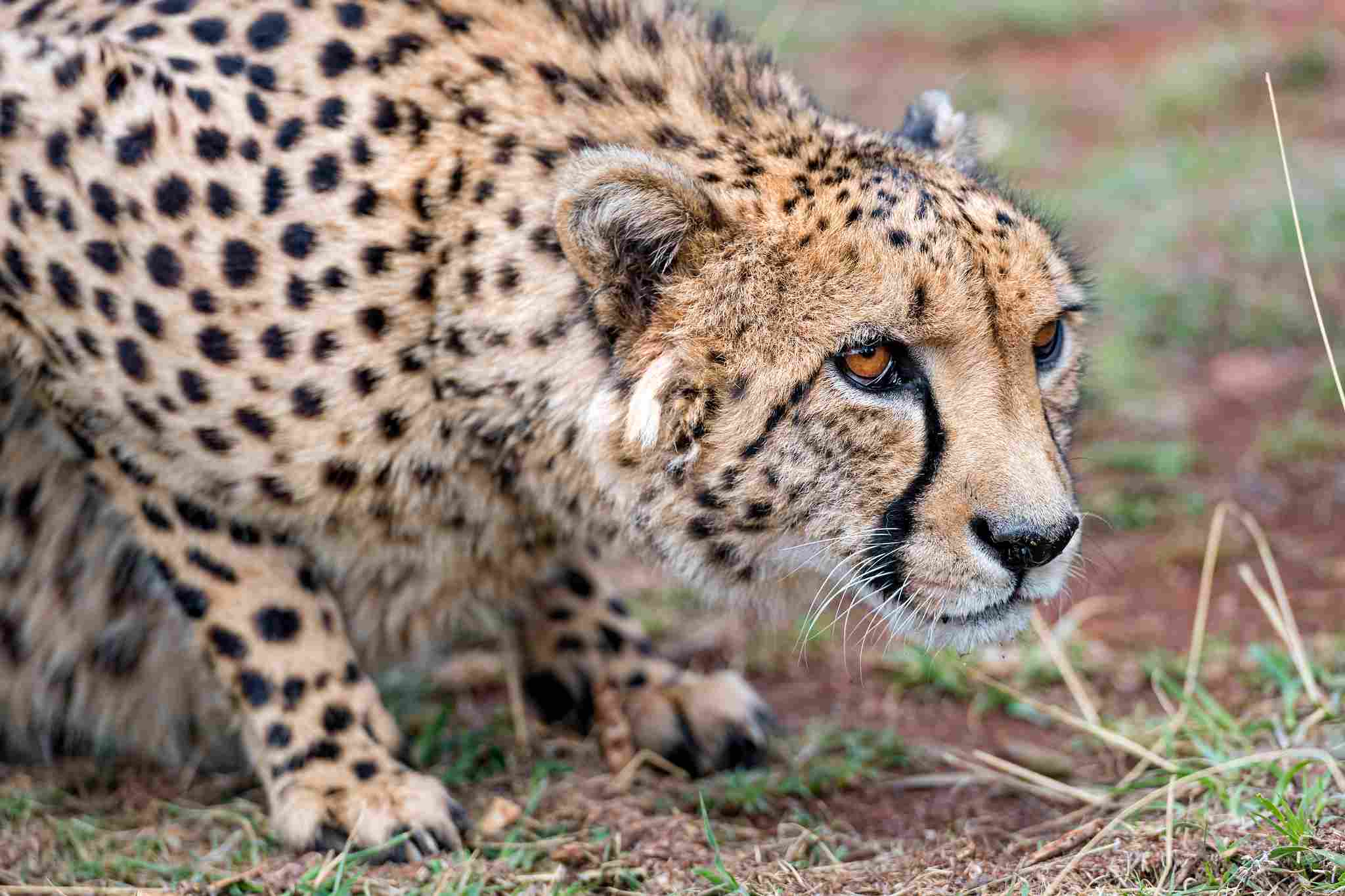
3). Size
When comparing the size of cheetahs and tigers, there are significant differences in their total body length and height at the shoulders. Tigers are known for their impressive size, being one of the largest big cat species. They can reach a total body length of up to 11 feet and stand at a height of around 3 to 3.5 feet at the shoulders. In contrast, cheetahs are smaller in size, with a total body length ranging from 3.5 to 4.5 feet and a height at the shoulders of approximately 2.5 to 3 feet.
The disparity in size between these two animals is a result of their different ecological adaptations. Tigers, being apex predators, require a larger size to take down larger prey and defend their territories. Their size and strength give them an advantage in hunting and establishing dominance. On the other hand, cheetahs have evolved to be more streamlined and agile, focusing on speed rather than brute strength. Their smaller size allows them to reach incredible speeds, making them the fastest land animals.
Therefore, tigers are significantly larger than cheetahs in terms of total body length and height at the shoulders. This size difference is a reflection of their distinct ecological roles and adaptations. Tigers’ larger size enables them to excel in hunting and territorial defense, while cheetahs’ smaller size allows them to achieve unmatched speed and agility.
4). Weight
Tigers are known for their sheer size and strength, and this is reflected in their weight. Adult male tigers can weigh anywhere between 400 to 700 pounds, while females typically weigh around 220 to 370 pounds. On the other hand, cheetahs are much lighter in comparison. Adult cheetahs usually weigh between 77 to 143 pounds, with females being slightly smaller and lighter than males.
The difference in weight between tigers and cheetahs is primarily due to their distinct ecological adaptations and hunting strategies. Tigers, being larger and more powerful, require more mass to take down larger prey and defend their territories. Their weight gives them an advantage in overpowering their prey and asserting dominance. In contrast, cheetahs rely on their incredible speed and agility to catch their prey. Their lighter weight allows them to accelerate quickly and change direction rapidly, making them highly efficient hunters.
Therefore, tigers are significantly heavier than cheetahs. The weight disparity between these two species is a result of their different ecological roles and hunting techniques. Tigers’ larger size and weight enable them to excel in hunting and territorial defense, while cheetahs’ lighter weight allows them to achieve unmatched speed and agility in pursuit of their prey.
5). Speed and Agility
Cheetahs are much faster than tigers, with a speed margin of above 15 miles per hour.
When it comes to speed and agility, the cheetah is unmatched in the animal kingdom. With its slender body, long legs, and flexible spine, the cheetah is built for speed. It can reach incredible speeds of up to 70 miles per hour in just a few seconds, making it the fastest land animal on Earth. This exceptional speed allows the cheetah to chase down its prey with ease, using its sharp claws and powerful jaws to bring it down.
On the other hand, while tigers are not as fast as cheetahs, they are still incredibly agile for their size. Tigers are known for their ability to move stealthily through dense vegetation, thanks to their muscular bodies and strong limbs. They can leap up to 20 feet in a single bound and are capable of making quick turns and sudden bursts of speed when needed.
The difference in speed and agility between cheetahs and tigers can be attributed to their different hunting strategies. Cheetahs rely on their speed to catch their prey, while tigers use a combination of stealth and strength to overpower theirs. Both adaptations have allowed these magnificent creatures to thrive in their respective habitats.
6). Bite Force
Cheetahs, although known for their incredible speed, do not possess a particularly strong bite force compared to other big cats. Their slender jaws and smaller skull size limit their bite force to around 475 psi (pounds per square inch). This is sufficient for their hunting needs, as cheetahs rely more on their speed and agility to catch and bring down their prey.
On the other hand, tigers have a much stronger bite force due to their larger size and more robust skull structure. Tigers can exert a bite force of around 1,050 psi, which is more than double that of a cheetah. This powerful bite force allows tigers to take down larger prey and deliver a lethal bite to their victims.
The difference in bite force between cheetahs and tigers is a result of their distinct hunting strategies. Cheetahs rely on suffocating their prey by clamping down on the throat, while tigers use their strong jaws to deliver a crushing bite to the neck or skull of their prey.
While cheetahs may not possess the strongest bite force among big cats, their speed and agility compensate for this limitation. Tigers, on the other hand, have a significantly stronger bite force, which enables them to take down larger prey.
7). Overall Physical Capacity (Which is Stronger?)
When comparing the overall physical capacity of tigers and cheetahs, it becomes evident that tigers possess a significant advantage. Tigers are larger and heavier than cheetahs, with much more muscle mass and endurance. These factors contribute to their overall strength and power.
In terms of size, tigers can grow to be much larger than cheetahs. Adult male tigers can weigh up to 660 pounds, while cheetahs typically weigh around 110 pounds. This size difference gives tigers a clear advantage in terms of physical strength.
Furthermore, tigers have a more robust skeletal structure and muscular build, allowing them to exert more force and power. Their larger size and muscle mass enable them to overpower their prey and deliver lethal blows.
When it comes to endurance, tigers also have the upper hand. They are known for their ability to sustain long chases and maintain their strength throughout the hunt. Cheetahs, on the other hand, rely on short bursts of speed and agility, which can quickly deplete their energy reserves.
In a violent confrontation between a tiger and a cheetah, the tiger’s superior physical capacity would likely result in the defeat of the cheetah. The larger size, greater strength, and endurance of the tiger would give it a significant advantage in such a scenario.
Therefore, when considering the overall physical capacity, tigers clearly outmatch cheetahs in terms of size, strength, and endurance. These factors make tigers the stronger of the two animals.
8). Habitat
Tigers are primarily found in dense forests, grasslands, and mangrove swamps across Asia. They are highly adaptable and can thrive in a variety of ecosystems, including tropical rainforests, subtropical forests, and even snowy regions. Tigers require a large territory to roam and hunt, which is why they are often found in areas with abundant prey and water sources.
On the other hand, cheetahs are mainly found in open grasslands and savannahs of Africa. They prefer vast, open spaces where they can utilize their incredible speed and agility to chase down prey. Cheetahs are not well-suited to dense forests or heavily vegetated areas, as it hinders their ability to sprint and maneuver effectively.
In terms of geographic range, tigers have a wider distribution compared to cheetahs. Tigers can be found in countries such as India, Russia, China, and Indonesia, while cheetahs are limited to sub-Saharan Africa and a small population in Iran.
in general, the habitat preferences and geographic ranges of tigers and cheetahs differ significantly. Tigers thrive in diverse ecosystems, while cheetahs are specialized for open grasslands and savannahs.
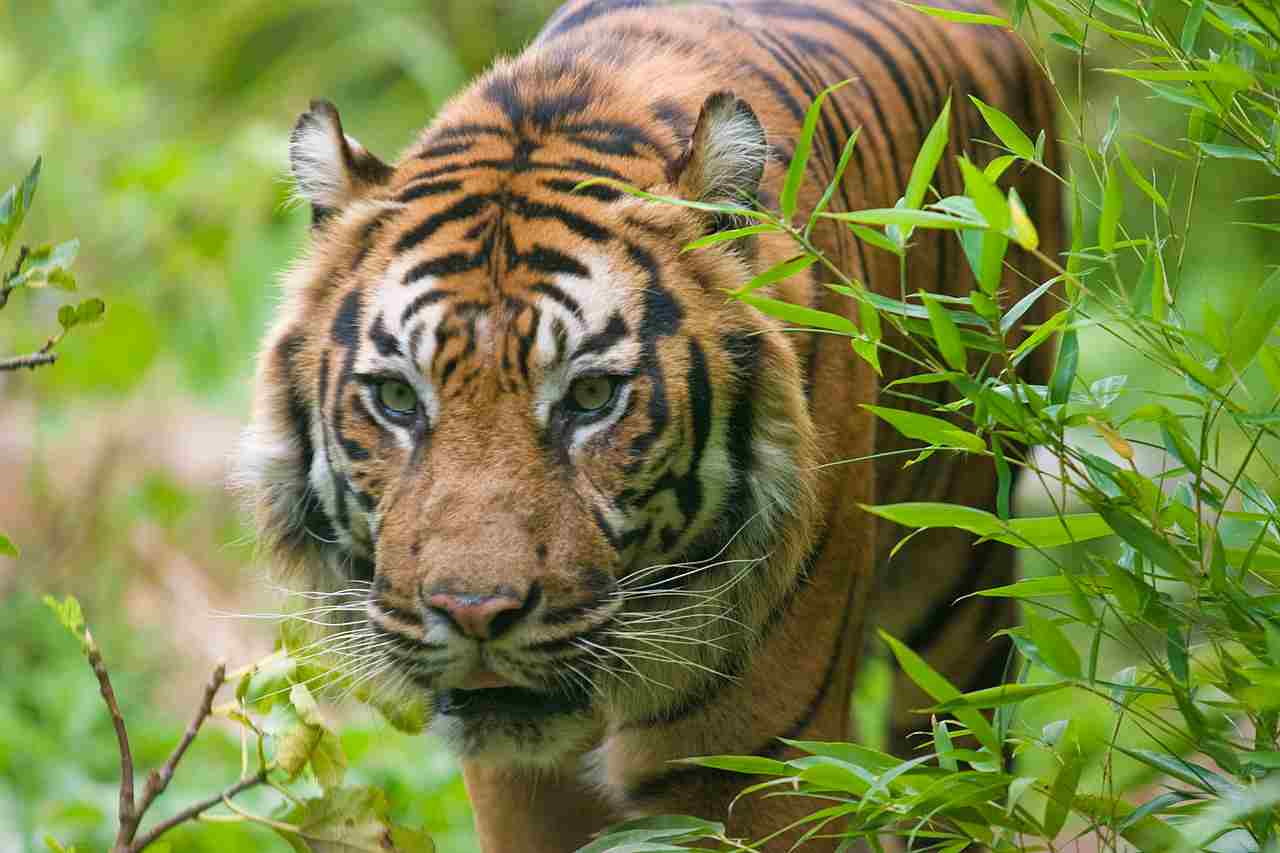
9). Lifespan
Cheetahs typically have a lifespan of around 10 to 12 years in the wild, although some individuals have been known to live up to 15 years. On the other hand, tigers have a longer lifespan, with individuals living on average between 16 to 18 years in the wild. However, tigers in captivity can live even longer, with some reaching their early 20s.
Several factors contribute to the difference in lifespan between cheetahs and tigers. One factor is the level of competition and predation they face in their respective habitats. Cheetahs, being smaller and less powerful than tigers, are more vulnerable to predation and face higher mortality rates. Tigers, on the other hand, are apex predators and face fewer threats from other animals.
Another factor is the availability of resources and the ability to secure a consistent food supply. Tigers, being larger and more powerful, have a greater chance of successfully hunting and securing prey, which contributes to their longer lifespan. Cheetahs, with their incredible speed and agility, rely on bursts of energy to catch their prey, which can be more challenging to sustain over time.
Therefore, tigers generally have a longer lifespan compared to cheetahs. The combination of their larger size, apex predator status, and ability to secure a consistent food supply contributes to their increased longevity in the wild.
10). Behavior
When comparing the behavior of cheetahs and tigers, there are several key differences to consider.
In terms of feeding behavior, both cheetahs and tigers are carnivorous predators. However, their hunting techniques differ. Cheetahs are known for their incredible speed and agility, relying on bursts of energy to chase down and capture their prey. Tigers, on the other hand, are ambush predators, using their strength and stealth to stalk and pounce on their unsuspecting prey.
Aggression is another aspect of behavior where cheetahs and tigers differ. Cheetahs are generally more docile and less aggressive compared to tigers. Tigers are known for their territorial behavior and can display aggression towards other tigers or intruders in their territory.
Vocalization is another behavior that sets cheetahs and tigers apart. Cheetahs are not as vocal as tigers and primarily communicate through body language and visual cues. Tigers, on the other hand, have a wide range of vocalizations, including roars, growls, and chuffing sounds, which they use for communication and marking their territory.
When it comes to social behavior, cheetahs are more solitary animals, typically living and hunting alone or in small family groups. Tigers, on the other hand, are more social and can form larger social groups, especially females and their cubs.
In terms of parenting, cheetah mothers are solely responsible for raising their cubs, while tiger mothers provide care and protection for their cubs for a longer period of time.
11). Reproduction
When comparing the reproduction of cheetahs and tigers, there are several key differences to consider.
Firstly, both cheetahs and tigers are viviparous, meaning they give birth to live young. However, the gestation period differs between the two species. Cheetahs have a relatively short gestation period of around 90-95 days, while tigers have a longer gestation period of approximately 100-110 days.
In terms of litter size, cheetahs typically give birth to a litter of 3-5 cubs, although larger litters of up to 8 cubs have been recorded. Tigers, on the other hand, usually have smaller litters, with an average of 2-4 cubs.
The reproductive behavior of cheetahs and tigers also differs. Cheetahs are known for their solitary nature, and males and females only come together for mating purposes. Tigers, on the other hand, engage in more complex social interactions during the mating season, with males competing for the attention of females.
Another notable difference is the level of parental care provided by cheetahs and tigers. Cheetah mothers are solely responsible for raising their cubs, providing them with food, protection, and teaching them essential hunting skills. In contrast, tiger mothers play a more active role in the upbringing of their cubs, providing care and protection for a longer period of time.
While both cheetahs and tigers are viviparous and give birth to live young, there are significant differences in their gestation periods, litter sizes, reproductive behaviors, and parental care.
12). Danger Posed to Humans
When it comes to the danger posed to humans, tigers are far more dangerous than cheetahs. Tigers are known for their aggressive nature and immense strength, making them a formidable threat. While cheetahs are not typically aggressive towards humans, tigers have been known to come close to human settlements and exhibit aggressive behavior.
In terms of the rate of human deaths caused, tigers have a much higher record compared to cheetahs. Tigers have been responsible for numerous attacks on humans, resulting in fatalities in some cases. On the other hand, cheetahs rarely pose a direct threat to humans and there have been very few reported incidents of cheetah attacks on humans.
If you happen to encounter a tiger or cheetah in the wild, it is important to take precautions to ensure your safety. In the case of tigers, it is crucial to avoid provoking or approaching them, as they can perceive humans as a threat. It is recommended to maintain a safe distance and slowly back away if you come across a tiger.
In comparison, encountering a cheetah is generally less dangerous. However, it is still important to exercise caution and avoid any sudden movements or actions that may startle the cheetah. Keeping a safe distance and respecting their space is essential to prevent any potential conflicts.
Therefore, while both tigers and cheetahs can pose a danger to humans, tigers are significantly more dangerous due to their aggressive nature and strength.
13). Intelligence
When comparing the intelligence of cheetahs and tigers, it is important to consider their different hunting strategies and behaviors. Cheetahs are known for their exceptional speed and agility, which they rely on to chase down their prey. They have developed specialized adaptations, such as a lightweight body and long legs, to excel in high-speed pursuits. However, this specialization in speed comes at the cost of other cognitive abilities.
On the other hand, tigers are renowned for their strategic hunting techniques and problem-solving skills. They are known to stalk their prey patiently, using stealth and camouflage to get as close as possible before launching a powerful attack. Tigers also exhibit complex social behaviors, such as territorial marking and communication through vocalizations.
While both cheetahs and tigers possess a level of intelligence necessary for survival in their respective habitats, tigers demonstrate a higher degree of cognitive abilities. Their ability to adapt their hunting strategies to different situations and their complex social interactions suggest a higher level of intelligence compared to cheetahs.
14). Tracks
When comparing the tracks of cheetahs and tigers, there are distinct differences that can help identify which animal left the mark. Cheetah tracks typically show a single claw mark at the front of the paw, while tiger tracks have retractable claws and therefore do not leave claw marks. This difference in claw marks can be a useful indicator when trying to determine which animal passed through an area.
In terms of size, tiger tracks are significantly larger than cheetah tracks. A tiger’s paw print can measure up to 5 inches in diameter, while a cheetah’s paw print is much smaller, usually around 3 inches in diameter. This size difference is due to the disparity in the overall size of the two animals.
Another distinguishing feature of tiger tracks is the presence of pad imprints. Tigers have large, round pads on their paws, which leave distinct impressions in the ground. These pad imprints can help differentiate tiger tracks from other big cat tracks.
Overall, the tracks of cheetahs and tigers provide valuable information about their presence and behavior in a particular area. By analyzing the size, claw marks, and pad imprints, researchers and wildlife enthusiasts can gain insights into the movements and habits of these magnificent animals in their natural habitats.
15). Conservation Status
The conservation status of cheetahs and tigers is a matter of concern due to their vulnerable populations. Both species are endangered or threatened, facing various challenges that jeopardize their survival in the wild.
For cheetahs, the main threats to their population include habitat loss, fragmentation, and degradation. As human activities expand, cheetahs lose their natural habitats, leading to a decline in their numbers. Additionally, illegal hunting and poaching for their valuable skins and body parts further contribute to their endangerment.
Tigers, on the other hand, face similar challenges in terms of habitat loss and degradation. Deforestation, primarily driven by human activities such as logging and agriculture, has resulted in the loss of tiger habitats. Furthermore, illegal hunting and poaching for their bones, skin, and other body parts, driven by the demand for traditional medicine and the illegal wildlife trade, pose significant threats to their survival.
Both cheetahs and tigers are facing critical conservation challenges. The loss of their natural habitats and the illegal wildlife trade are the main threats to their survival in the wild. Efforts must be made to protect and restore their habitats, enforce strict anti-poaching measures, and raise awareness about the importance of conserving these animals.
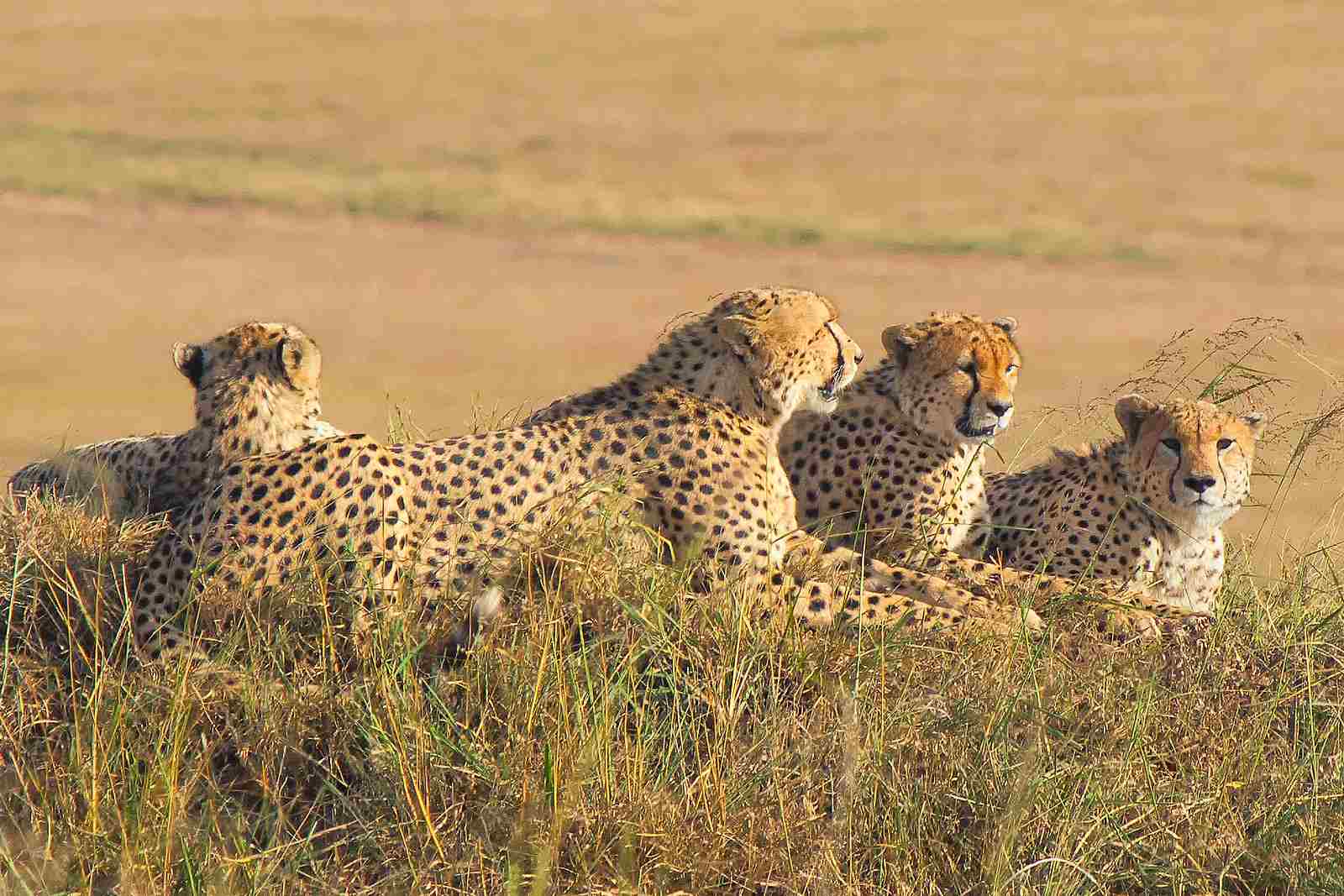
Conclusion
I). SIMILARITIES
In comparing cheetahs and tigers, it is evident that both species share certain similarities. Firstly, both animals belong to the same family, Felidae, and are known for their incredible speed and agility. Cheetahs are renowned as the fastest land animals, while tigers are known for their impressive strength and power. Additionally, both species have a similar body structure, with muscular bodies and sharp retractable claws that aid in hunting and capturing prey.
II). DIFFERENCES
Despite their similarities, there are also notable differences between cheetahs and tigers. One significant difference lies in their size. Tigers are much larger and heavier than cheetahs, with adult males weighing up to 600 pounds, while cheetahs typically weigh around 100 pounds. Another difference is their habitat preference. Cheetahs are primarily found in open grasslands and savannas, while tigers inhabit a range of habitats including forests, mangroves, and grasslands.
Furthermore, their hunting techniques differ. Cheetahs rely on their incredible speed to chase down and capture their prey, while tigers use their strength and stealth to ambush and overpower their targets. In terms of behavior, cheetahs are more solitary animals, while tigers are known to be more social and territorial.
